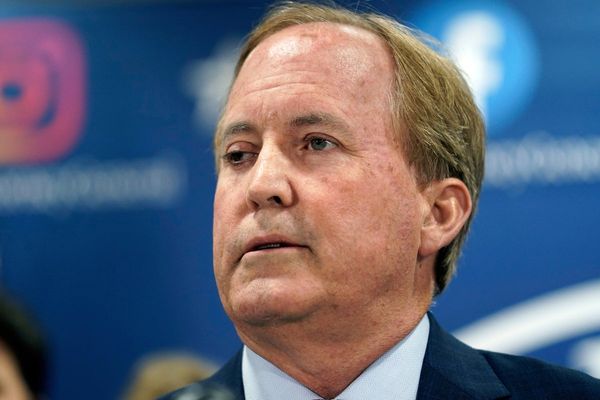
All right, pilgrim, put down that drumstick and listen up.
It's Thanksgiving, that time of year when your wallet shrinks and your stomach expands.
Related: Goldman Sachs analyst sees starting point for year-end S&P 500 rally
Americans spend roughly $1.2 billion on Thanksgiving turkeys each year with 46 million of the semi-flightless fowls getting the ax, according to WalletHub.
And speaking of eating: Americans consume an average of 3,150 to 4,500 calories on Thanksgiving, and the hosts of these sumptuous meals will spend roughly $361 on holiday dinners, which include food, drinks and décor.
🐂 Don’t miss the move: SIGN UP for TheStreet’s FREE Daily newsletter 🐻
Money is on the mind of a lot people at this time of year since the holiday-shopping season officially kicks off on Black Friday.
A stronger buck on war risk, Fed uncertainty
Quincy Krosby, chief global strategist for LPL Financial, said the dollar delivered yet another week of strength against its global peers as geopolitical risk has edged higher with the escalation of the Ukraine/Russia conflict.
“The dollar, considered a safe haven during periods of heightened global tension, has witnessed heavier inflows as the latest — and potentially most dangerous — phase of the military combat between the two warring nations unfolds,” Krosby said in her weekly market commentary.

Shutterstock
In addition to the geopolitical risk, she said, the dollar’s climb has been predicated on factors such as uncertainty about how the Federal Reserve will move on interest rates in December.
Krosby: Questions about Trump tariffs
Krosby also cited a solid domestic economic landscape with inflation still “sticky,” a weakening euro as expectations suggest the potential for a stronger rate cut, and questions regarding the inflationary implications of the Trump administration's tariff agenda.
On Nov. 25 Trump suggested on his Truth Social social-media network that he would impose additional tariffs of around 10% on China-made imports, while slapping a 25% levy on imports from both Canada and Mexico, both of which are signatories to the U.S.-Mexico-Canada Agreement trade agreement.
Related: Analyst revamps S&P 500 target for 2025
"The question for currency markets is whether the administration goes full throttle on the extent of the tariffs implied by President-elect Trump during the political campaign, and on the other side of the tariff equation, the retaliatory responses from the country's trading partners," Krosby said.
"The final line for currency markets is how much inflation is inherent in the tariffs once enacted and how the Fed's monetary policy is impacted."
Going into the shortened trading holiday week, Krosby said, the dollar eased as the market applauded Trump's nomination of Scott Bessent to head the Treasury Department.
Bessent is a fiscal hawk, someone who seeks to cut deficits and tighten government borrowing and spending, many financial observers suggest.
“[Markets] are surmising that Bessent will help steer the incoming administration's policies towards a pro-growth posture, but without the ramifications of inflationary consequences," she said.
Veteran trader: Trump tariffs a tactic
TheStreet Pro’s Stephen Guilfoyle said Trump's tariffs threats might be a negotiating tactic designed to provoke increased cooperation from the U.S.'s key trading partners.
“We do know that President-elect Trump is both more than willing to bargain and more than willing to act if not satisfied,” he said.
He noted that Bessent wrote in a recent op-ed on the Fox News website that tariffs are a “useful tool.”
Related: What's next for mortgage rates depends on the White House
Bessent sees tariffs as a means to an end, potentially playing “a central role” in reaching Trump's “foreign policy objectives.”
The veteran trader said that U.S. financial markets have fallen in love with Bessent’s so-called 3-3-3 plan.
The plan includes reducing the federal budget deficit by 3% by the year 2028, increasing GDP growth by 3%, mostly through deregulation, and boosting domestic oil production by 3 million barrels per day.
“Is this the way to grow the U.S. economy organically (as opposed to fiscal recklessness that aided the few at the expense of the many), while keeping inflation in check?” Guilfoyle asked. "The markets appear to think so."
Bank of America: Stocks strong around holidays
Louis Navellier, chairman and founder of Navellier & Associates, said sentiment seems to be improving going into the short holiday week.
More Economic Analysis:
- Top Wall Street analyst unveils unexpected S&P 500 price target for 2025
- October retail sales add further complexity to Fed rate cut bets
- CPI inflation sparks Fed interest rate cut bets
"Further indications of a strong holiday spending season will be helpful," he said. "The next Fed rate decision isn't until Dec. 18, leaving minimal time for a strong reaction before the final holiday week. "
"But with big gains in most portfolios postponing tax selling and $7 trillion still on the sidelines, the wind remains at the market's back going into year-end," he added.
Stephen Suttmeier, chief equity technical strategist at Bank of America Securities, said in a recent research note that he was thankful for bullish holiday seasonality.
He said Thanksgiving week tended to have solid S&P 500 returns and even stronger ones in presidential election years.
Related: Warren Buffett just sold 3 massively popular stocks
"S&P 500 seasonality suggests that Thanksgiving week can be a strong week," the analyst said. "The S&P 500 has been up 60% of the time on an average return of 0.28% (0.46% median) for all Thanksgiving weeks going back to 1928."
What is the historical S&P 500 performance after Thanksgiving?
The S&P 500 has shown some "digestion" with lower returns the week after Thanksgiving, he added.
For all years going back to 1928, the week after Thanksgiving showed the S&P 500 up 53% of the time. The average return was a bit below flat — negative 0.01% — with the median at positive 0.15%.
The week after Thanksgiving in presidential election years shows the S&P 500 down 67% of the time with an average return of negative 1.12% (negative 0.68% median).
But strong positive returns from Thanksgiving through New Year's Eve point to a buy-the-post-turkey-day dip ahead of a year-end rip pattern.
The Thanksgiving into year-end period shows the S&P 500 up 71% of the time with an average return of 1.46% and the median at 1.7%.
In presidential-election years the S&P 500 is up 75% of the time from Thanksgiving into year-end with an average return of 1.38% (1.6% median).
Related: Veteran fund manager sees world of pain coming for stocks







